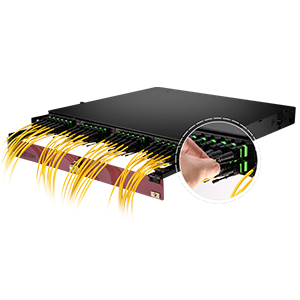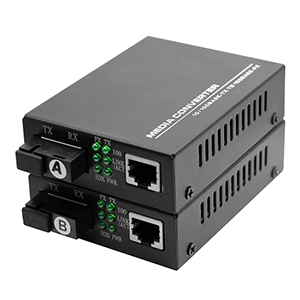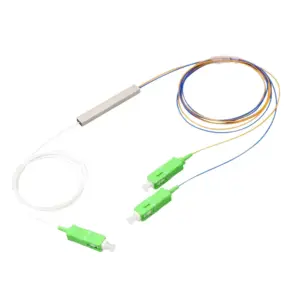QSFP28 and 100G QSFP are two optical modules widely used in high-speed optical communications. This article will explore the main differences between these two optical modules. We will first define the technical specifications and characteristics of QSFP28 and 100G QSFP interfaces, and briefly introduce their applications in applications such as 100GbE.
We will deeply compare the main differences between QSFP28 and 100G QSFP in terms of interface specifications, transmission rate, signal coding and modulation, optical transceiver chips, and power consumption and power budget. We will explain how these differences affect the selection and performance of the two optical modules in practical applications. Subsequently, we will analyze the applicability of QSFP28 and 100G QSFP for different application scenarios such as data centers and telecommunication networks, and provide selection recommendations and key considerations.
QSFP28 Overview
Let me introduce you to the overview of the QSFP28 interface:
QSFP28 technical specifications and features:
QSFP28 is an optical/electrical module interface standard that uses four-channel parallel transmission. The main features are as follows:
- Interface specifications: Module size is 28.9mm×13.8mm×8.5mm
- Transmission rate: supports up to 28Gbps single channel rate
- Number of channels: 4 parallel transmission channels, total rate reaches 100Gbps
- Transmission media: Supports both optical fiber and copper cable
- Electrical interface: Use SERDES (serial-to-parallel conversion) interface
- Power consumption requirement: Maximum power consumption of the module does not exceed 15W
These features make QSFP28 a standard interface for 100GbE and higher-speed Ethernet.
Application of QSFP28 in 100GbE and other applications:
QSFP28 is widely used in the following 100GbE and faster Ethernet fields:
- Data center interconnection: QSFP28 can realize 100GbE interconnection inside and outside the data center
- Server and switch connection: QSFP28 is used for connection between high-speed servers and switches
- Telecom network application: QSFP28 is suitable for 100GbE transmission of telecom backbone network and metro network
- High-performance computing: QSFP28 module is used for high-speed interconnection inside HPC system
With its high speed, miniaturization and low power consumption, QSFP28 has become the preferred interface standard for 100GbE and future faster Ethernet.
100G QSFP Overview
Let me briefly introduce the relevant content of 100G QSFP:
100G QSFP technical specifications and features:
100G QSFP is a high-speed optical/electrical module based on the QSFP28 interface standard. The main features include:
- Interface specifications: the same as QSFP28, the module size is 28.9mm×13.8mm×8.5mm
- Transmission rate: supports 4 channels of 100Gbps high-speed parallel transmission
- Transmission medium: supports both optical fiber and copper cable
- Electrical interface: uses 4 channels of 25Gbps SERDES interface
- Power consumption requirements: the maximum power consumption of the module does not exceed 12W
These features make 100G QSFP has become the main optical/electrical module interface for 100GbE networks.
Application of 100G QSFP in 100GbE and other applications:
100G QSFP is widely used in the following 100GbE and higher-speed Ethernet fields:
- Data center interconnection: 100G QSFP is used for 100GbE high-speed interconnection inside and outside the data center
- Server and switch connection: 100G QSFP connects high-speed servers and switch devices
- Telecom network application: 100G QSFP is used in telecom backbone networks and metropolitan networks
- High-performance computing: 100G QSFP is used for high-bandwidth interconnection inside HPC systems
With its high speed, low power consumption, and miniaturization, 100G QSFP has become the preferred physical interface standard for 100GbE and future higher-speed Ethernet.
Main differences between QSFP28 and 100G QSFP
Let me compare the main differences between QSFP28 and 100G QSFP for you in detail:
Interface specifications:
- QSFP28 interface size is 28.9mm×13.8mm×8.5mm
- 100G QSFP interface is exactly the same, maintaining size compatibility
- This makes 100G QSFP a direct replacement for QSFP28 module applications
Transmission rate:
- QSFP28 supports a single channel up to 28Gbps, 4 channels total rate 100Gbps
- 100G QSFP has an overall rate of 4 channels of 100Gbps
- 100G QSFP provides higher transmission bandwidth and performance
Signal coding and modulation:
- QSFP28 uses NRZ coding and PAM4 modulation technology
- 100G QSFP uses more advanced PAM4 coding and modulation methods
- PAM4 can achieve higher transmission rates at the same bandwidth
Optical transceiver chip:
- QSFP28 module uses 4 independent 28G optical transceiver chips
- 100G QSFP uses an integrated 4×25G optical transceiver chip
- Integrated chips can improve integration and reliability
Power consumption and power budget:
- The maximum power consumption of QSFP28 module is 15W
- The power consumption of 100G QSFP is lower, with a maximum of no more than 12W
- This helps to reduce the total power consumption and heat dissipation requirements of the system
In general, 100G QSFP has improved in transmission rate, signal encoding, power consumption, etc., and can better meet the performance requirements of future 100GbE and higher-speed Ethernet. However, the two remain compatible in physical interface specifications and can be interchanged.
Choice of QSFP28 and 100G QSFP in different applications
Let me analyze the selection suggestions of QSFP28 and 100G QSFP in different application scenarios:
Data center interconnection application:
- Application requirements: high speed, low power consumption, high integration
- Recommended selection: 100G QSFP is more suitable
- Consideration factors: 100G QSFP provides higher transmission bandwidth and lower power consumption, which can better meet the 100GbE interconnection requirements of data centers
Server-switch connection application:
- Application requirements: high bandwidth, low latency, low power consumption
- Recommended selection: 100G QSFP is more suitable
- Consideration factors: 100G QSFP has a higher single-channel rate and lower power consumption, which is conducive to high-performance interconnection between servers and switches.
Telecom network applications:
- Application requirements: long-distance transmission, reliability, compatibility
- Recommended selection: QSFP28 and 100G QSFP are both applicable
- Considerations: The interface size of the two is the same, they can be used interchangeably, and both meet the 100GbE transmission requirements of telecommunications networks
High-performance computing applications:
- Application requirements: ultra-high rate, low latency, low power consumption
- Recommended selection: 100G QSFP is more suitable
- Considerations: 100G QSFP provides higher total bandwidth and better power consumption characteristics, and is more suitable for high-speed interconnection of HPC systems.
In general, when choosing QSFP28 or 100G QSFP, it is necessary to comprehensively consider the specific requirements of the application scenario, including key indicators such as transmission rate, power consumption, and integration. For applications that require higher performance, 100G QSFP will be a better choice; and for some scenarios with higher compatibility requirements, QSFP28 can also be used as an alternative.
Summary
QSFP28 and 100G QSFP, as two important interface technologies in high-speed optical communications, have their own advantages in meeting different application requirements. Our company has long focused on the research and development and production of optical communication equipment and its key components, and has accumulated rich industry experience.
We provide high-performance QSFP28 and 100G QSFP products. Whether you are building a high-speed data center interconnection network or deploying a high-capacity telecom-grade optical transmission system, we can provide you with the most suitable solution. Our team of engineers will provide you with professional selection guidance and comprehensive technical support for installation, commissioning, maintenance, etc. Contact us now to learn more.
QSFP28 and 100G QSFP FAQ
QSFP28 is a type of transceiver form factor that supports 100 Gigabit Ethernet (100GbE) data rates using 4 lanes of 25 Gbps each.
100G QSFP is an older form factor that also supports 100 Gigabit Ethernet, but uses a different signaling and interface specification compared to QSFP28.
The main difference is the underlying technology and electrical interface. QSFP28 uses PAM4 signaling for higher spectral efficiency, while 100G QSFP uses traditional NRZ signaling.
Both QSFP28 and 100G QSFP are used for 100GbE data center and telecommunications networking, but QSFP28 is more widely adopted for newer high-speed deployments.
QSFP28 has a higher port density compared to 100G QSFP due to its more compact form factor, allowing for more 100GbE ports in the same physical space.
QSFP28 transceivers typically have lower power consumption compared to 100G QSFP, thanks to the more efficient PAM4 signaling and advanced semiconductor technologies.
QSFP28 can support longer reach networking applications, with support for single-mode fiber links up to 10 km, while 100G QSFP is generally limited to shorter reach multimode fiber links.
QSFP28 uses the same QSFP connector as 100G QSFP, but the internal wiring and signaling is different, requiring compatible cabling and interconnects.
QSFP28 transceivers are generally more widely available and have become more cost-effective as the technology has matured, compared to the older 100G QSFP.
As data center and networking demands continue to grow, QSFP28 is expected to become the dominant 100GbE form factor, while 100G QSFP will gradually be phased out in favor of more advanced and efficient solutions.




